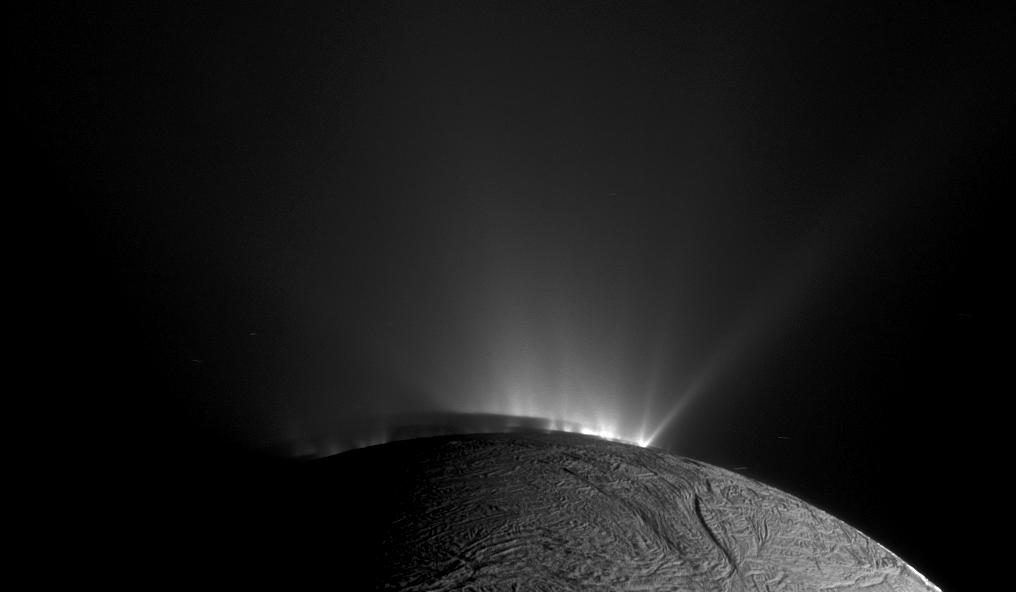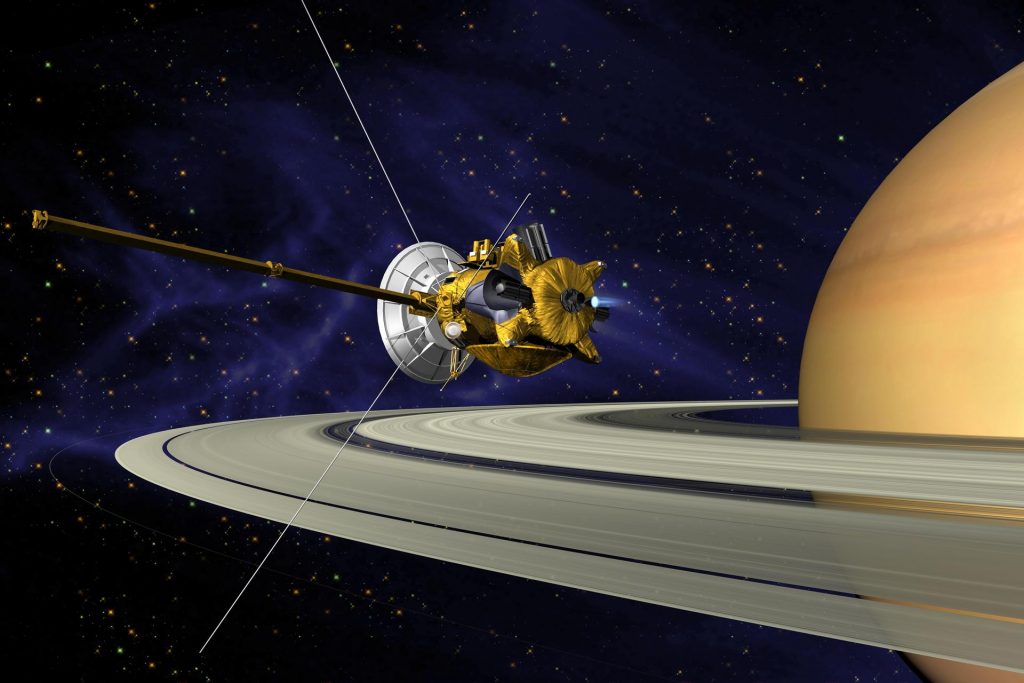WATCH: NASA scientists announce compelling evidence for hydrothermal vents on Saturn’s moon Enceladus.
A tremendous ocean swirls under the surface of Saturn’s moon Enceladus, and now, NASA scientists say its waters may possess life-sustaining features previously seen only on Earth.
A new report published today in Science has revealed compelling evidence for hydrothermal vents in Enceladus’ global ocean. NASA’s Cassini probe, which has been orbiting the planet Saturn since 2004, made this discovery in 2015. One of Enceladus’ most visible features is its ice plumes, enormous geysers that release water vapor into space. Cassini passed close enough to Enceladus — less than 30 miles from the moon’s surface — to cross through one of these geysers.

A picture of the ice plumes on Enceladus taken by Cassini. Photo by NASA
Scientists from Johns Hopkins University, Cornell University and the Southwest Research Institute used this spritzing of Cassini to gather information on the chemical composition of the oceans.
Cassini detected molecular hydrogen, methane and carbon dioxide within the vapor — chemicals typically found naturally in hydrothermal vents at the bottom of Earth’s oceans. The team found 98 percent of the plume was water, one percent was hydrogen and the rest was composed of other molecules, such as carbon dioxide, methane and ammonia.
“This finding is the result of 12 years of Cassini investigations, and it really represents a capstone finding for the mission,” Linda Spilker, Cassini project scientist at NASA’s Jet Propulsion Laboratory, said at a press conference Thursday. “Because we now know that Enceladus has almost all of the ingredients you would need to support life as we know it on Earth.”

An artist’s rendering of NASA’s Cassini orbiter. Photo by NASA
“[The chemical composition] speaks to the habitability,” said Mary Voytek, director of the NASA Astrobiology Program. “On the other hand, the fact that we can measure high concentrations of hydrogen and carbon dioxide means that there might not be any life there at all. And if there is life, it’s not very active.”
By that, Voytek means that Enceladus should have lower amounts of molecular hydrogen and carbon dioxide if the moon harbors an abundance of life, because organisms (as we know them) consume the chemicals in large amounts. On Earth, this chemical consumption produces methane — a byproduct that Cassini also observed in the Enceladus geyser plumes.
Cassini’s pass through the plume confirmed that the moon has almost all the right chemicals for life to form. Phosphorus and sulphur are the two holdouts, though scientists suspect these ingredients exist in the moon’s rocky center.
Take a look at the latest images from NASA's Cassini Mission to Saturn showing three of the planet's 64 moons—including the one known as the "Death Star."
Posted by PBS NewsHour on Friday, March 17, 2017
Hydrothermal vents on Earth are home to numerous unique life forms, such as giant tube worms, shrimp with eyes on their backs and thousands of microbes.
Cassini’s mission ends in September, when the probe will descend into Saturn’s atmosphere, sending back as much data as it can before it is destroyed by the heat and pressure.
The scientists also announced today that, in both 2014 and 2016, the Hubble Space Telescope detected plumes of water coming out of Jupiter’s icy moon Europa. Other researchers theorize that similar vents are also present on Jupiter’s moon Europa.
“These observations are really informing us of major things happening in these ocean worlds right now,” said Jim Green, director of the Planetary Science Division at NASA Headquarters at a NASA press conference on Thursday. “What I really want you to walk away with is, we’re pushing the frontiers, we’re finding new environments, we’re looking in a way we’ve never thought possible before for environments in our solar system which may harbor life today.”
MORE: What do the stars hold for the Trump administration? Here’s how NASA’s mission could change
ncG1vNJzZmivp6x7sa7SZ6arn1%2Bjsri%2Fx6isq2ejmLamusKeZqeZo5Z6sK%2FEmqVmq5GpwrO6jKamqKZdoq66ec%2Boqqydo6h6rbXFnmSsraOprqq6yKeeZqCpmb%2BwwMeeqaaZnGLDprrTrA%3D%3D